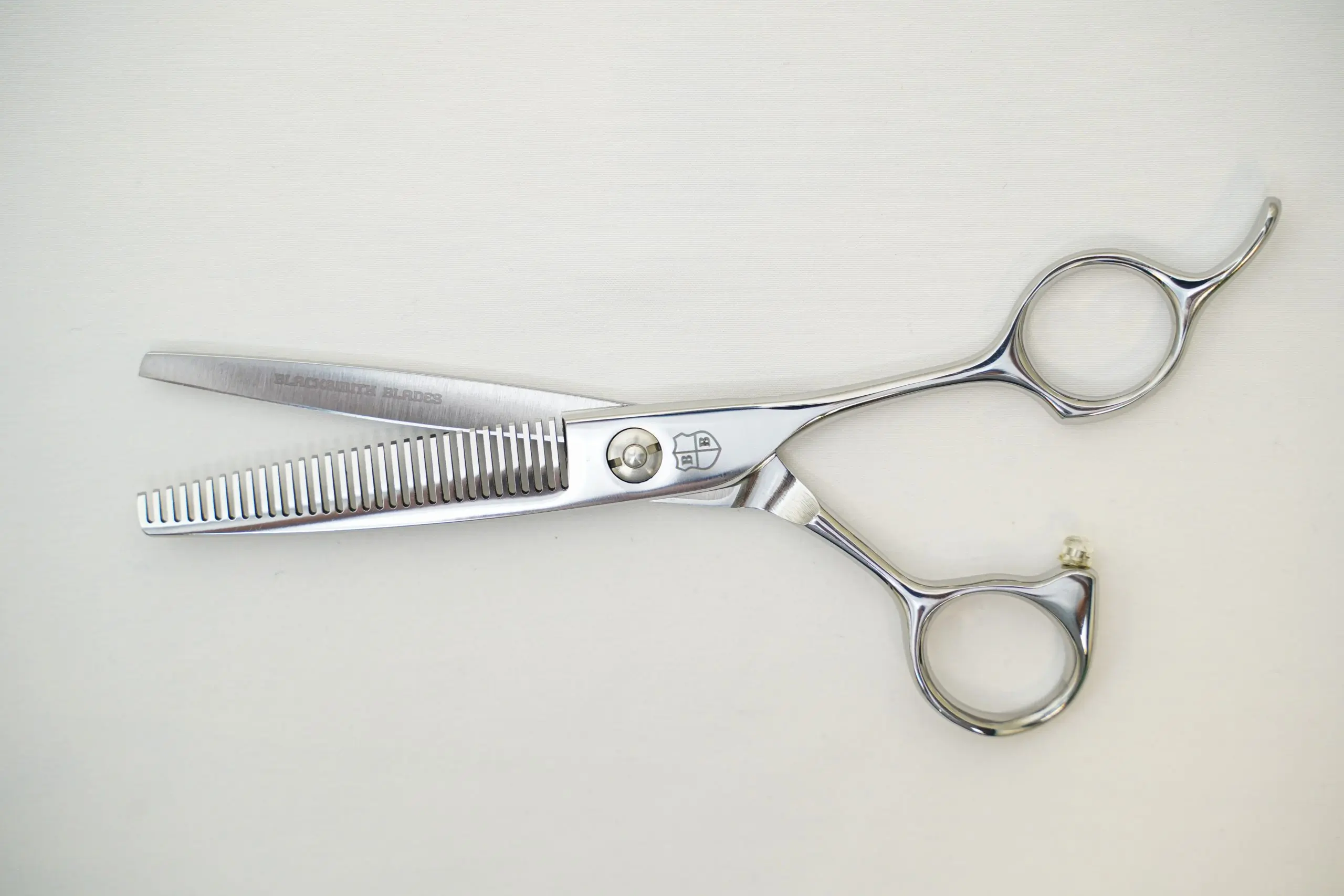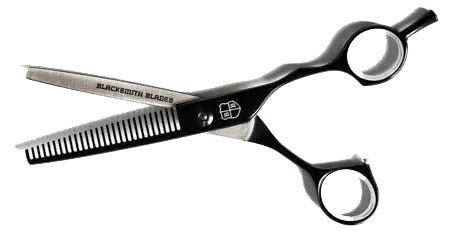Ever since the dawn of the cosmetology industry, artists have strived to perfect their skills in hair cutting and styling. Among the various tools and techniques used, thinning shears have proved to be essential for achieving that perfect blend of style, volume, and texture. While often overlooked by beginners, thinning shears are a game-changer in the world of hairstyling and texturizing.
In this in-depth guide, we’ll break down everything you need to know about thinning shears and how to master the art of texturizing with these must-have hair-cutting shears. So, settle down, grab a cup of coffee, and let’s begin our journey toward precision-cutting perfection.
What are Thinning Shears?
Thinning shears, also known as texturizing shears or blending shears, are a type of hair-cutting shears specifically designed to remove bulk and weight from hair without altering its length. Unlike regular scissors, thinning shears have one or both blades featuring a set of teeth, similar to a comb. These teeth help in cutting only a portion of the hair strands with each snip, allowing for a more subtle and controlled removal of hair.
The beauty of thinning shears lies in their versatility and unique ability to create texture within the hair. When used correctly, they can be the secret weapon for transforming a dull, lifeless haircut into a dynamic, voluminous masterpiece.
Why Use Thinning Shears?
First and foremost, thinning shears are used to reduce bulk and weight from the hair without compromising on length. This feature is particularly beneficial for clients with thick, heavy, or unmanageable hair, as it helps in creating a more balanced and lightweight style. In addition, thinning shears can be used to create movement and dimension within the hair. By strategically removing some hair strands, you can create an illusion of depth and texture.
Moreover, thinning shears can be utilized to blend different layers in a haircut seamlessly. This is especially useful when dealing with choppy, uneven layers that need to be softened and blended together. In short, thinning shears are a versatile and indispensable tool for any stylist looking to elevate their skills in the realm of precision cutting and texturizing.
Types of Thinning Shears
Not all thinning shears are created equal; they come in various designs, sizes, and tooth counts to cater to different hair types, textures, and desired outcomes. Generally, thinning shears can be classified into three main categories:
1. Single-Sided Thinning Shears
2. Double-Sided Thinning Shears
3. Wide-Tooth Thinning Shears
Single-sided thinning shears have one smooth blade and one toothed blade, making them ideal for controlled precision cutting. With these shears, you can snip away at the hair with ease and confidence. On the other hand, double-sided thinning shears feature teeth on both blades. These shears are perfect for heavy-duty thinning and blending work, as they remove more hair strands with each cut.
Wide-tooth thinning shears, as the name suggests, have fewer teeth spaced further apart on their blades. These shears are best suited for creating bold, chunky textures and removing significant amounts of hair in one go. As a stylist, it’s crucial to familiarize yourself with the different types of thinning shears and choose the one that best suits your needs and the needs of your clients.
How to Choose the Right Thinning Shears
With so many options out there, choosing the right thinning shears can be a daunting task. However, by keeping a few crucial factors in mind, you can streamline the selection process. Start by considering the number of teeth on the shears – fewer teeth result in more hair being removed, while more teeth lead to a subtler effect. Also, pay attention to the size and design of the shears. Smaller, lightweight shears allow for greater precision and control, while larger ones facilitate quicker, more efficient thinning and texturizing.
Another essential factor is the quality of the materials used in the shears. High-quality stainless steel, titanium, or a combination of both ensures durability, sharpness, and corrosion resistance. Lastly, don’t forget to consider the comfort and ergonomic design of the handles. After all, you’ll be using these shears for extended periods, and it’s essential for them to be a good fit for your hands.
Mastering the Art of Texturizing with Thinning Shears
Now that we’ve covered the basics, it’s time to dive into the process of mastering the art of texturizing with thinning shears. To get the best results, it’s crucial to understand your client’s hair type, texture, and desired outcome and choose the appropriate thinning shears accordingly. Remember, practice makes perfect, so don’t be afraid to experiment and hone your skills over time.
Why texturizing is essential
Every hairstylist knows that a great haircut is about more than just the length. It also has everything to do with texture. Texturizing is essential to create movement, dimension, and to remove excess weight from the hair. When done correctly, it will help your clients achieve the desired look they are seeking and give their hair a more natural, blended appearance. However, mastering this technique can be a challenge, especially for those who may just be starting out in the industry. Enter the wonderful world of thinning shears – versatile tools that make texturizing a breeze!
Techniques for using thinning shears
As with any hairstyling tool, mastering the art of texturizing with thinning shears involves learning proper techniques. One common method is point cutting, where you hold the shears at a 45-degree angle to the hair, and make small cuts as you move down the hair strand. This creates a soft, natural texture and is great for blending layers. Another technique to consider is slide cutting. Here, you’ll glide the shears down the hair while slightly closing the blades, creating a more dramatic, layered effect. Keep in mind that practice makes perfect, and don’t be afraid to experiment on a mannequin head before moving to real clients.
The Do’s and Don’ts of Thinning Shears
To wrap up our deep dive into the world of precision cutting and texturizing with thinning shears, here’s a list of do’s and don’ts to keep in mind as you practice your newfound skills:
Do’s
1. Do choose the right thinning shears for the job
2. Do practice before using thinning shears on clients
3. Do use proper sectioning techniques
4. Do take your time and work systematically
Don’ts
1. Don’t use thinning shears too close to the scalp
2. Don’t use thinning shears on wet hair
3. Don’t over-thin the hair, as it may result in a choppy appearance
4. Don’t forget to clean and maintain your shears for optimal performance



